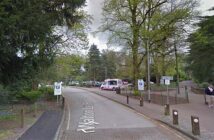TOWN Hall chiefs at Warrington have approved publication of a major economic report which spells out just how successful the town is.
The Local Economic Assessment (LEA) has been drawn up by consultants, working with borough council officers to comply with government requirements. Its contents are not widely known, according to Cllr Bob Barr, (pictured) executive member for planning and regeneration.
Its contents are not widely known, according to Cllr Bob Barr, (pictured) executive member for planning and regeneration.
“Warrington is one of the UK’s best kept secrets – and it must cease to be so,” he said.
The report points out that the people who came to Warrington at the time of the New Town development are now aging. The population, which has grown continuously since 1981, is still growing, but more slowly.
If economic performance is to be maintained, the population growth has to continue as the New Town generation move into retirement.
Warrington has a strong labour market, with high employment rates and attracts many workers from outside the borough.
It is home to the headquarters of many major companies. In 2008, 8,033 businesses were recorded, employing 115,418 people – a 19 per cent rise from the previous decade.
The economy has changed dramatically, however. Manufacturing represents only 7.6 per cent of employment and continues to fall, despite already being below the national average.
Warrington performs well at the national and regional level and the town is “better connected” by road, rail and air than almost any other in the UK.
There is lot of warehousing and the potential to offer more offices. Housing growth has matched economic success. Price have risen – but affordability is not as severe an issue as in some neighbouring authorities, particularly in Cheshire.
But the town will need a significant increase in housing for the current working population.
It also faces other sustainability challenges if it is to reduce its carbon footprint. The master plan for the New Town created a high reliance on car transport, although the proportion of carbon emissions generated by transport – excluding mtorways – is estimated at 19 per cent compared to a national average of 24 per cent.
The findings of the LEA will be used when planning future strategies and policies of the council.
Why Warrington is so successful
33 Comments
Share.





3 Comments
So the council have paid consultants to tell them what they want to hear then?
Who would want to move to a town which has made savage cuts in the Community, got rid of the key players in charge of the day to day running in the council and has one of the worst traffic problems in the North West?
Successful? Don’t mention the debt.
Successful – says who? Again, on our behalf and at our expense, the WBC have paid consultants to tell us what we already know and what they want to hear. I agree, WBC have removed key players from their workforce in a most autocratic way. The town is filthy – litter everywhere. It has one of the worst traffic scenes in the NW which WBC seem incapable of solving. The Town Centre and Market are dying. Why do consultants have the answers. It would be better, and cheaper, if the Officers at WBC talked to some of their colleagues in the more successful towns in the North West e.g. Bury, Wigan, Manchester as they must be doing something right! Councillor Barr seems full of himself and obviously is being told what to say.